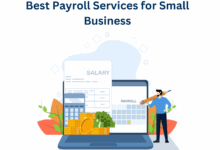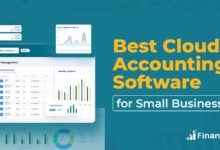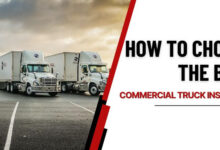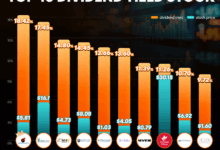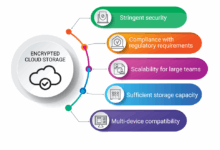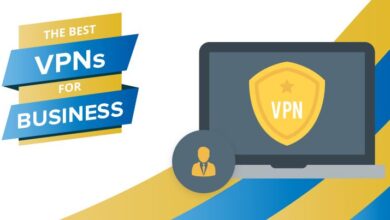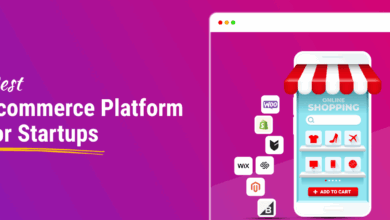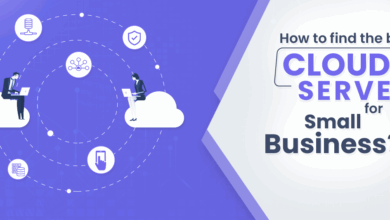Best CRM for Small Businesses 2025: Top Solutions to Boost Your Sales
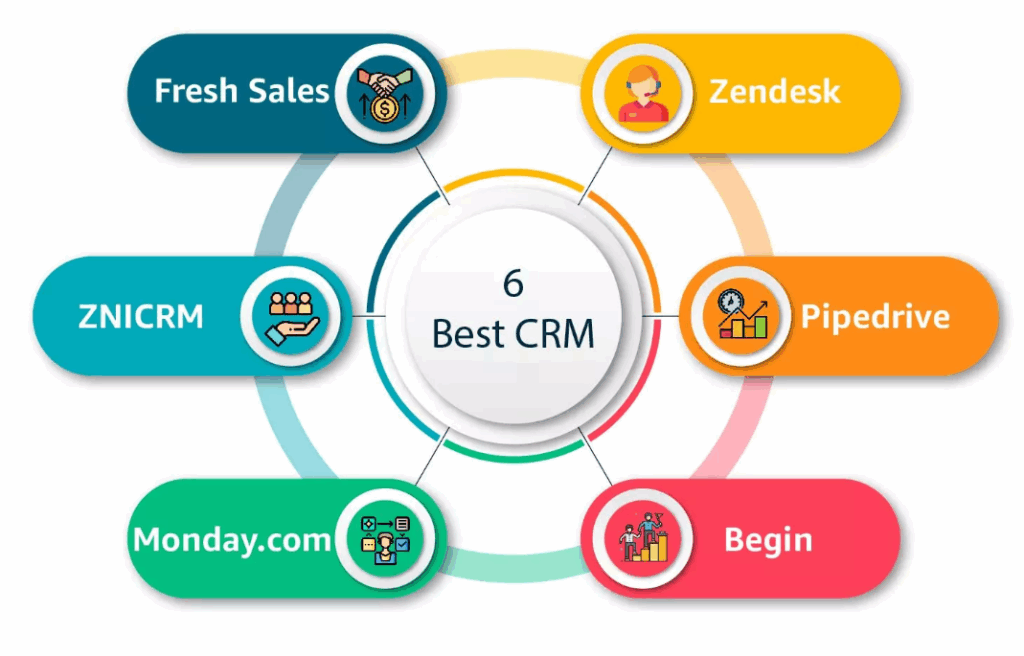
Customer Relationship Management (CRM) software is a tool that helps businesses manage interactions with current and potential customers. For small businesses, a CRM system is crucial as it streamlines processes, improves customer service, and increases profitability.
Key Benefits of CRM for Small Businesses
- Centralized Customer Data: Store all customer information in one place, making it easily accessible.
- Improved Customer Service: Provide personalized service by understanding customer needs and history.
- Increased Sales: Identify sales opportunities and track progress to close deals more effectively.
- Efficient Marketing: Segment customers and tailor marketing campaigns to specific groups.
- Better Collaboration: Facilitate communication among team members to ensure everyone is on the same page.
Essential Features to Look for in a CRM
When selecting a CRM, consider the following features:
- Contact Management: Organize and manage customer information efficiently.
- Sales Pipeline Management: Track the progress of sales opportunities through various stages.
- Automation: Automate repetitive tasks to save time and reduce errors.
- Analytics and Reporting: Gain insights into sales performance and customer behavior.
- Integration: Ensure the CRM integrates with other tools you use, such as email and calendar applications.
Top 5 CRMs for Small Businesses in 2025
1. Salesforce Essentials
Salesforce Essentials is a powerful CRM designed for small businesses. It offers AI-driven sales insights, workflow automation, and mobile accessibility. Starting at $25 per user/month, it provides scalability for growing businesses.
2. Zoho CRM
Zoho CRM is an affordable solution starting at $14 per user/month. It includes AI-powered analytics, lead scoring, and multi-channel communication. Zoho CRM is ideal for businesses seeking a customizable and budget-friendly CRM.
3. Freshsales
Freshsales offers an intuitive interface with AI-powered lead scoring and built-in phone capabilities. Pricing starts at $15 per user/month, making it a cost-effective choice for small businesses. It also integrates with popular tools like Gmail and MailChimp.
4. HubSpot CRM
HubSpot CRM is a free tool that provides essential features such as contact management and email tracking. It offers scalability with paid upgrades and integrates seamlessly with HubSpot’s marketing and sales tools.
5. Pipedrive
Pipedrive focuses on visual sales pipeline management and automation. Starting at $14.90 per user/month, it offers a user-friendly interface and integrates with over 275 apps. Pipedrive is suitable for businesses looking to streamline their sales process.
CRM Comparison Table
| CRM | Pricing (per user/month) | Key Features | Best For |
|---|---|---|---|
| Salesforce | $25 | AI insights, workflow automation, mobile access | Growing businesses |
| Zoho CRM | $14 | AI analytics, lead scoring, multi-channel comm. | Budget-conscious businesses |
| Freshsales | $15 | AI lead scoring, built-in phone, integrations | Small teams |
| HubSpot CRM | Free (with upgrades) | Contact management, email tracking, scalability | Startups |
| Pipedrive | $14.90 | Sales pipeline management, automation | Sales-focused teams |
Why Investing in a CRM Is Beneficial
Implementing a CRM can lead to:
- Increased Sales Efficiency: Automate tasks and streamline processes to close deals faster.
- Enhanced Customer Relationships: Understand customer needs and provide personalized service.
- Data-Driven Decisions: Utilize analytics to make informed business decisions.
- Scalability: Grow your business without outgrowing your CRM system.
How to Purchase a CRM
To purchase a CRM:
- Research: Identify your business needs and compare CRM options.
- Trial: Take advantage of free trials to test the CRM’s features.
- Purchase: Select the plan that fits your budget and requirements.
- Implement: Integrate the CRM into your business operations.
What Problems Can CRM Solve?
Here are real-world business scenarios where CRM proves essential:
Managing Customer Data
Problem: Scattered spreadsheets and lost client data
Solution: A CRM centralizes customer data, ensuring every team member has access to accurate and up-to-date info.
Poor Sales Pipeline Visibility
Problem: Sales reps forget to follow up or lose deals in the process
Solution: CRMs like Pipedrive visually manage sales funnels, keeping reps on track with timely follow-ups.
Inefficient Email Marketing
Problem: Generic mass emails get low engagement
Solution: Zoho CRM and HubSpot offer email personalization and automation, improving open and response rates.
Wasted Time on Manual Tasks
Problem: Reps spend more time on admin work than selling
Solution: Freshsales and Salesforce Essentials automate repetitive tasks, letting reps focus on closing.
👥 Use Case 5: Customer Churn
Problem: No clear record of client interactions or support history
Solution: A CRM tracks interactions so teams can respond quickly and prevent churn by being proactive.
How to Buy: Step-by-Step + Purchase Links
You’re ready to make a move — now what? Here’s how to get started with your CRM system:
Try Before You Buy
Most CRMs offer free trials — take full advantage!
Choose a Plan
After your trial, choose a pricing plan that matches your budget and team size:
| CRM | Starter Price (Per User/Month) | Link to Buy |
|---|---|---|
| Salesforce | $25 | Buy Now |
| Zoho CRM | $14 | Buy Now |
| Freshsales | $15 | Buy Now |
| Pipedrive | $14.90 | Buy Now |
| HubSpot CRM | Free / Upgrades from $18 | Buy Now |
Implement the CRM
Once subscribed, follow these tips:
- Import customer contacts
- Set up sales pipelines
- Connect email/calendar integrations
- Train your team (many platforms offer tutorials)
Pro Tips for Getting the Most from Your CRM
Now that you’ve chosen your ideal CRM, it’s time to make it work smarter for your business. Below are expert-level best practices to help you maximize ROI:
1. Automate Everything You Can
- Use built-in automation tools to handle tasks like follow-up emails, reminders, and status updates.
- Example: With Freshsales, you can set up AI-based lead scoring and automatic email drip campaigns.
2. Integrate with Your Existing Stack
- Link your CRM to your email (e.g., Gmail/Outlook), marketing tools (like Mailchimp), and customer support (like Zendesk).
- Most platforms like Zoho CRM and HubSpot offer 100+ integrations.
3. Regularly Clean Your Data
- Keep your database accurate by removing outdated or duplicate entries.
- Run a data audit every 3–6 months.
4. Train Your Team Properly
- Your CRM is only as good as the people using it.
- Take advantage of onboarding webinars, tutorials, and certification courses (e.g., Salesforce Trailhead).
5. Use Analytics to Guide Strategy
- Review your dashboard weekly to uncover trends.
- Adjust your sales or marketing strategy based on real data, not gut instinct.
Free CRM Tools for Micro-Businesses
If your business is super small (just you or a team of 2–3), don’t worry — you can still use powerful CRMs without spending a dime!
| Free CRM | What You Get | Best For | Link |
|---|---|---|---|
| HubSpot CRM | Unlimited users, contact mgmt, pipelines | Startups & freelancers | Get It Free |
| Zoho CRM Free Edition | Up to 3 users, lead tracking | Micro-teams & solopreneurs | Start Now |
| Bitrix24 | 12 users, task/project mgmt + CRM | Small agencies or studios | Try Free |
FAQ (Frequently Asked Questions)
1. Which CRM is easiest to use for beginners?
HubSpot CRM is widely considered the most user-friendly for beginners, thanks to its clean UI and free onboarding tutorials.
2. Can I use CRM on mobile?
Absolutely! All top CRMs — including Salesforce, Zoho, and Freshsales — offer mobile apps for iOS and Android.
3. Do I need a CRM if I only have a few clients?
Yes. Even with a few clients, CRMs help manage relationships, track interactions, and prepare you for future growth.
4. How secure is my data in a CRM?
Top providers use enterprise-grade encryption and comply with regulations like GDPR to ensure data safety.
5. Can a CRM grow with my business?
Yes! Solutions like Salesforce and Zoho CRM offer scalable plans, allowing you to upgrade as your business expands.
